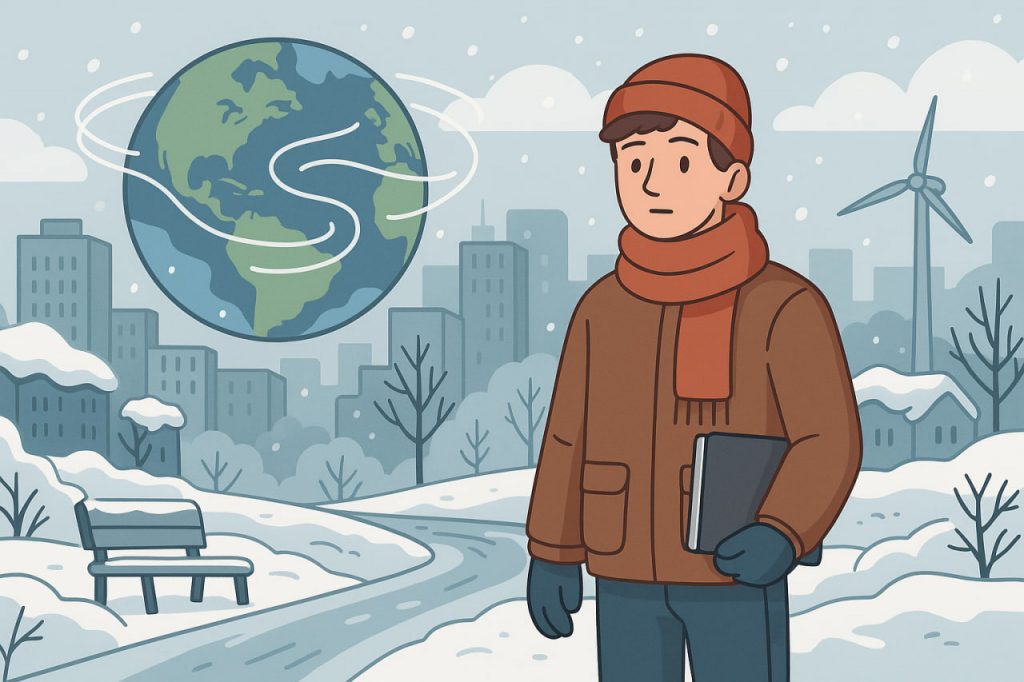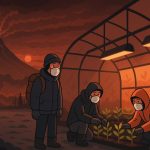Around 12,900 years ago, the Earth suddenly plunged back into near-glacial conditions after a long period of warming — an event known as the Younger Dryas. Lasting for over a thousand years, this abrupt climate reversal dramatically altered ecosystems, caused mass extinctions, and reshaped human civilization. Scientists believe it was triggered by catastrophic meltwater floods or possibly a cometary impact that disrupted global ocean currents. But what if such an event occurred in our modern, interconnected world today?
The Younger Dryas in Earth’s History
The Younger Dryas marked the end of the last Ice Age, a time when global temperatures were rising and glaciers were retreating. Suddenly, average temperatures in the Northern Hemisphere dropped by 4–10°C in just a few decades. Europe returned to frigid conditions, ice sheets re-expanded, and vast regions became tundra once more.
This cooling lasted roughly 1,200 years, until around 11,700 years ago, when Earth warmed rapidly again — leading to the stable climate of the Holocene epoch, in which human civilization flourished.
What Triggered the Younger Dryas?
The exact cause remains debated, but there are two major hypotheses:
- The Meltwater Pulse Hypothesis — The rapid melting of North American glaciers released massive amounts of freshwater into the North Atlantic, disrupting the Atlantic Meridional Overturning Circulation (AMOC) — the system that carries warm tropical waters northward. This halted ocean heat transport and plunged the Northern Hemisphere into cold conditions.
- The Impact Hypothesis — Evidence from North America and Greenland suggests a cosmic impact, possibly a comet or fragmented asteroid, ignited global fires and released debris into the atmosphere, blocking sunlight and triggering abrupt cooling.
Both scenarios could, in theory, repeat under the right environmental stresses.
If It Happened Today
If a new Younger Dryas-like event struck now, the consequences would be global and catastrophic. The modern climate system is already destabilized by greenhouse gas emissions, making it more sensitive to abrupt shifts. Here’s what might happen:
- Collapse of Ocean Currents
If the AMOC weakened or shut down — as some scientists fear could happen this century — Europe and North America could experience rapid cooling even as the tropics continued to heat up. Winter storms, sea ice expansion, and failed agricultural seasons would follow. - Massive Food Shortages
Modern agriculture depends on stable weather. A sharp drop in temperature and shortened growing seasons would devastate global crop yields. Countries reliant on grain exports could face famine-level crises, disrupting trade and triggering economic collapse. - Climate Chaos and Regional Shifts
A new ice age wouldn’t cool the entire planet evenly. Some regions might freeze while others flood. The monsoon system could collapse, drying out Africa and Asia. Glaciers could advance across Canada, Scandinavia, and Russia, while sea levels initially fall due to ice buildup. - Ecosystem Shock and Extinctions
Many modern species — including those vital to human survival — couldn’t adapt to such rapid temperature drops. Forests would die back, ocean life would collapse from disrupted currents, and biodiversity would plunge. - Geopolitical Instability
With billions of people displaced by failing crops, droughts, and extreme winters, mass migration and conflict would likely erupt. Governments would face unprecedented pressure to manage dwindling resources, water scarcity, and mass panic.
Could Modern Technology Help Us Survive?
Humanity today has advantages our ancestors did not: satellites, data networks, and global cooperation. We could monitor and predict environmental shifts, adapt infrastructure, and use renewable energy to mitigate collapse. However, no technology could quickly reverse ocean circulation failure or prevent multi-decade global cooling once it starts.
Efforts to adapt would depend on international collaboration, rapid agricultural innovation, and sustainable resource management — a true test of human unity.
Could It Really Happen Again?
Modern climate models show that a complete AMOC shutdown or large-scale cooling event is possible but unlikely within the next century. Yet the system is showing early warning signs, including:
- Slowing ocean circulation in the North Atlantic.
- Increased freshwater runoff from Greenland’s melting ice sheet.
- Shifting storm patterns and jet stream instability.
If global warming melts too much polar ice too quickly, it could ironically trigger a mini ice age similar in mechanism to the Younger Dryas — a paradoxical result of climate change.
Interesting Facts
- During the Younger Dryas, temperatures in Greenland dropped up to 15°C in just a few years.
- The event coincided with the extinction of woolly mammoths, giant sloths, and saber-toothed cats.
- The name “Dryas” comes from a cold-loving Arctic flower, Dryas octopetala, found in fossil pollen layers from that era.
- Some researchers link the Younger Dryas to the collapse of the Clovis culture in North America.
- The end of the Younger Dryas may have sparked the Neolithic Revolution, when humans began farming in response to rapid warming.
P.S. Nevertheless, while the world is still stable, we need to stop the wars and at least start extensive international cooperation on science and emergency situations.
Glossary
- Younger Dryas — a sudden cold period at the end of the last Ice Age, lasting about 1,200 years.
- AMOC (Atlantic Meridional Overturning Circulation) — a major ocean current system that regulates global climate.
- Volcanic winter — a cooling event caused by volcanic ash or aerosols blocking sunlight.
- Paleoclimate — the study of past climates using geological and biological evidence.
- Meltwater pulse — sudden massive releases of freshwater from melting glaciers.


